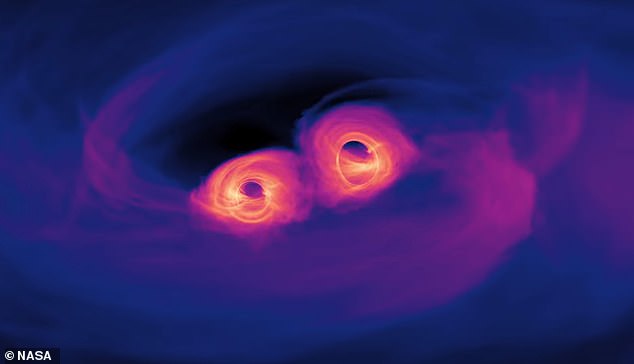
"Cataclysmic Black Hole Merger Births Colossal Monster Dwarfing Solar Mass"
Astronomers Stunned as Two Massive Black Holes Merge into Colossal Cosmic Beast
Scientists have detected a monumental collision between two gigantic black holes, resulting in a single entity over 225 times the mass of the Sun. The merger, observed through fleeting gravitational wave signals, challenges existing theories about black hole formation.
A Record-Breaking Discovery
The event, named GW231123, was picked up by the LIGO observatories in Washington and Louisiana. The gravitational wave signal lasted just 0.1 seconds and originated from a location 2–13 billion light-years away. Even more astonishing, the merging black holes were spinning at speeds 400,000 times faster than Earth’s rotation.
“This is the most massive black hole binary ever detected via gravitational waves,” said Professor Mark Hannam of Cardiff University. “Black holes of this size shouldn’t exist under standard stellar evolution models. They likely formed from earlier mergers of smaller black holes.”
Pushing the Limits of Science
Black holes, regions of spacetime with gravity so intense that not even light escapes, remain among the universe’s most enigmatic phenomena. The merger’s extreme mass and spin rates push the boundaries of both detection technology and theoretical astrophysics.
“The rapid spin complicates our ability to model the event,” explained Dr. Charlie Hoy from the University of Portsmouth. “It’s a critical test for refining our understanding of Einstein’s theory of general relativity.”

Artistic depiction of black hole merger (Credit: NASA)
How Does It Compare?
While GW231123 is the heaviest merger detected via gravitational waves, larger black holes have been observed. In 2024, the James Webb Space Telescope identified a black hole 400 million times the Sun’s mass in the early universe. At the other extreme, theoretical “micro” black holes—smaller than atoms—may even exist on Earth, with thousands potentially passing through our planet undetected each year.

The merged black hole exceeds 225 solar masses (Artist’s impression)
The Role of LIGO
The Laser Interferometer Gravitational-Wave Observatory (LIGO) has identified around 300 black hole mergers since its first detection in 2015. Each event provides clues about the life cycles of stars and the evolution of galaxies. However, GW231123’s extreme characteristics are unparalleled.
“Every merger teaches us something new,” said Hannam. “This one forces us to rethink how black holes grow.”

The LIGO detector in Hanford, Washington, key to the discovery
Why It Matters
Black holes form when massive stars collapse, but their growth through mergers remains poorly understood. GW231123 supports the idea that successive collisions create ever-larger black holes, potentially leading to the supermassive ones at galaxy centers.
The findings, presented at the International Conference on General Relativity and Gravitation in Glasgow, underscore the need for advanced models and technologies to unravel cosmic mysteries.
In a universe full of wonders, black hole mergers remind us how much we have yet to learn.
Key Facts About Black Holes:
- Formed from collapsed stars or successive mergers.
- Gravity so strong that light cannot escape.
- Supermassive varieties (millions to billions of solar masses) anchor galaxies.
- Mergers ripple spacetime, detected as gravitational waves.


